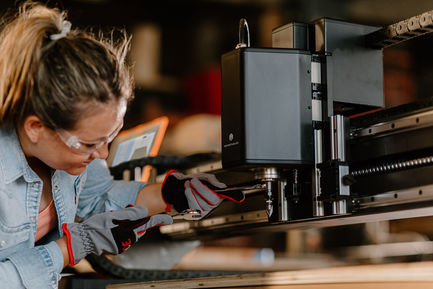TRANSFORM YOUR
CLASSROOM WITH
DIGITAL FABRICATION

From CNC Machines to Laser Cutters and more build curriculum around today's advanced manufacturing technologies
TECHNOLOGY FOR YOUR CLASSROOM
A full selection of tools to help your program succeed.
Why Integrate CNC & Laser Cutting Into Your Curriculum?
Science, Technology & Trade Skills Development
Bridge the gap between science, technology, engineering, and hands-on trades.
Real-World Applications
Teach students practical skills used in aerospace, automotive, woodworking, and fabrication industries
Engaging, Project-Based Learning
Keep students motivated with interactive, hands-on projects.
Career & Workforce Readiness
Equip students with in-demand skills that employers value.
FEATURED IN









